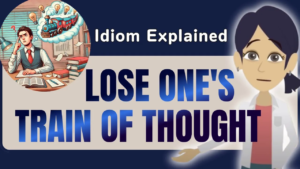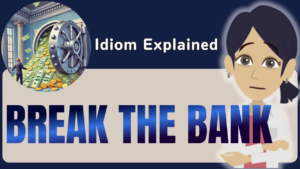Ever wondered why those simple words instantly spark excitement and anticipation?
To be about to experience something unexpectedly enjoyable or delightful.
This everyday English idiom powerfully conveys the anticipation of something pleasing that awaits you. Whether you’re about to enjoy a remarkable concert, taste a decadent dessert, or witness something special, this phrase signals positive excitement.
In this guide, we’ll explore how to use this versatile expression in both casual and professional settings, uncover its literal and figurative interpretations, and discover how these simple words can boost enthusiasm and confidence in listeners.
Introduction to the Idiom

When someone says, “You’re in for a treat,” they suggest that something enjoyable, exciting, or special is on the horizon.
This idiom sets a mood of anticipation and optimism.
Whether you are about to experience a remarkable concert, indulge in a decadent dessert, or witness an uplifting event, these words imply positive excitement.
In many English-speaking cultures, “treat” refers to a small reward, such as a candy or gift, but in an idiomatic sense, it goes beyond mere physical items.
It encapsulates the idea of surprise, delight, and the promise of a memorable experience.
People often use this idiom to build enthusiasm. For instance, if a friend is visiting your hometown for the first time, you might say, “You’re in for a treat when you see the beautiful sunset by the beach.”
The phrase helps paint an image of something uniquely pleasant and worth looking forward to. While the literal meaning focuses on a physical treat or gift, the figurative meaning highlights a forthcoming experience that uplifts the spirit.
Literal vs. Figurative: Understanding Both
Literal Meaning
Taken literally, the word “treat” often refers to something small and delightful. It can be a sweet dessert, a present, or any item given as a reward or token of appreciation.
For example, if you receive a piece of chocolate unexpectedly, you could call that a “treat.” However, when someone says, “You’re in for a treat,” they rarely refer to a tangible gift.
Instead, they hint at a pleasant experience that awaits you.
Figurative Meaning in Everyday Use
Figuratively, “You’re in for a treat” speaks to the anticipation of something wonderful. Rather than focusing on an actual item, it highlights the pleasant surprise that a situation or event can bring.
You might say, “You’re in for a treat if you visit the new café downtown,” suggesting that the atmosphere or menu is unexpectedly delightful.
It is commonly used in conversation, advertising, and casual writings to spark curiosity and entice people to look forward to what comes next.
Examples That Clarify Meanings
- Surprise Party: If a friend hints, “Come over this weekend; you’re in for a treat,” they might be planning a surprise party. The excitement and fun of the event embody the spirit of this idiom.
- Unexpected Dessert: When you order a meal at a restaurant and the chef surprises you with a complimentary dessert, you can say, “I didn’t expect this! I’m definitely in for a treat.”
By connecting the idiom with real-life scenarios, it becomes easier to recall and apply.
Whether you envision a small, literal reward or a bigger, figurative thrill, the phrase consistently expresses the promise of something enjoyable.
A Story to Illustrate: Dining Out
To shine a light on how “You’re in for a treat” works in action, imagine walking into a brand-new restaurant in your neighborhood. You have no expectations.
The decor is simple, the menu is unfamiliar, and you are unsure about the quality of the food. Suddenly, your friend leans over and says, “Trust me, you’re in for a treat.” Initially, you may not grasp the full meaning.
However, as soon as you taste the first bite, you are swept away by mouthwatering flavors and exquisite presentation. The service is also impeccable. This genuinely delightful experience surpasses your initial neutrality.
Story of a Restaurant Visit
After hearing positive rumors about a new eatery, you decide to give it a try. As you step inside, the aroma immediately catches your attention, but you remain cautiously optimistic.
The staff greets you warmly, and everything about the place feels inviting. Little by little, each dish arrives with impeccable presentation.
You find yourself marveling at the burst of flavors. From the appetizer to the dessert, every moment confirms that you truly were “in for a treat.”
Application of the Idiom
In this context, “You’re in for a treat” elevates the entire dining experience. The idiom suggests more than just a good meal; it promises a memorable moment that exceeds ordinary expectations.
The sense of curiosity transforms into genuine happiness as each course is savored.
Analysis of the Story’s Context
The power of the phrase lies in its ability to capture an element of surprise. Telling someone they are “in for a treat” builds a sense of wonder and anticipation, especially if they initially have minimal expectations.
When reality then outperforms those expectations, the result is an even greater sense of satisfaction.
Fun Facts
Below are ten fun facts about “You’re in for a treat,” shedding more light on how it is understood and used in everyday English:
- Unexpected or Surprising: It often hints at something that will catch you off guard in a positive way.
- Versatile Usage: It is appropriate in both casual settings (like among friends) and more formal contexts (such as advertising campaigns).
- Pleasant Surprise: The phrase consistently implies something that will delight or charm you.
- Common in English: It is widely used across various English-speaking regions, making it a phrase you will encounter frequently.
- Variety of Situations: It can describe experiences ranging from entertainment (movies, concerts) to everyday events (restaurant visits).
- Advertising and Marketing: Companies often use this idiom to market events, products, or services, harnessing its positive connotations.
- Origin in the United States: While it’s challenging to pinpoint an exact starting date, it became popularized in American English before spreading globally.
- Literature and Movies: You can find characters using this idiom in novels, scripts, and screenplays to indicate exciting developments.
- Positive and Optimistic: It promotes a hopeful tone, suggesting good news or thrilling outcomes.
- Personal and Professional Contexts: Whether you are at home chatting with friends or writing a business email, the idiom can be adapted to suit the situation.
Example Sentences
Using “You’re in for a treat” effectively can add flair and enthusiasm to your communication. Below are a few example sentences that demonstrate its adaptability in different contexts:
- “You’re in for a treat if you visit the new art exhibit.”
- Explanation: This indicates that the art exhibit is impressive and worth experiencing, arousing curiosity about what is on display.
- Explanation: This indicates that the art exhibit is impressive and worth experiencing, arousing curiosity about what is on display.
- “I have a surprise for you and you’re in for a treat.”
- Explanation: The phrase heightens the excitement of an upcoming reveal, implying that the surprise will be quite pleasurable.
- Explanation: The phrase heightens the excitement of an upcoming reveal, implying that the surprise will be quite pleasurable.
- “If you love chocolate, you’re in for a treat at this dessert place.”
- Explanation: This suggests that the dessert place offers something special for chocolate enthusiasts—beyond just ordinary sweets.
In each of these scenarios, the idiom injects positivity and excitement. It signals that something better than usual is about to happen.
Rephrasing
Rewriting a sentence in various ways can help you internalize the essence of “You’re in for a treat.” Below is an example of one sentence rewritten with and without the idiom:
Original Sentence
“I heard the concert is going to be amazing, and you’re in for a treat.”
Rephrased Using the Idiom
“I heard the concert is going to be outstanding, so trust me—you’re in for a treat.”
Rephrased Without the Idiom
“I heard the concert is going to be outstanding, so you should be excited.”
Benefits of Rephrasing
By practicing alternative sentence structures, you reinforce your understanding of how idioms convey nuanced meanings.
When you understand both the direct and indirect messages embedded in phrases like “You’re in for a treat,” you can fine-tune your own usage to fit specific situations.
Whether you opt for direct enthusiasm or subtle hints, knowing several ways to express the same idea broadens your linguistic toolkit.
Real-Life Story
Imagine a person feeling anxious about starting a new job. The transition brings fresh responsibilities and uncertainties, creating a sense of tension.
A supportive colleague offers reassuring words, saying, “Don’t worry, you’re in for a treat here.” Instantly, the person’s mindset shifts from fear to curiosity and excitement.
Rather than dreading the unknown, they begin envisioning supportive teammates, interesting projects, and opportunities for growth.
Impact of the Idiom on Confidence
This simple phrase “You’re in for a treat” carries a message of positivity, implying that the new environment will be better or more enjoyable than initially expected.
Hearing it can ease worries by instilling optimism.



Words have power, and in this case, they help reshape someone’s emotional landscape from dread to anticipation.
Evaluating the Story’s Impact
A colleague’s affirmation can mean the difference between lingering anxiety and healthy enthusiasm. By stating, “You’re in for a treat,” the speaker effectively provides encouragement wrapped in optimism.
This story highlights how the right words can influence emotions and perspectives, reminding us to be mindful of the impact our expressions have on others.
Similar & Opposite
It can be helpful to compare “You’re in for a treat” with expressions that either share a similar sense of excitement or convey an opposite tone.
By examining analogous phrases, you can refine your communication skills and be ready to adapt your language according to any situation.
Similar Expressions
- “It’s a blast”: Connotes a fun, lively, and enjoyable experience.
- “It’s a delight”: Emphasizes pleasure or joy.
- “It’s fantastic”: Highlights an exceptional or extraordinary quality.
Opposite Expressions
- “It’s a letdown”: Signifies disappointment or underwhelming results.
- “It’s disappointing”: Expresses dissatisfaction or failing to meet expectations.
- “It’s underwhelming”: Suggests something is less thrilling or impressive than anticipated.
Usage in Different Contexts
Whether referring to a thrilling adventure or cautioning against something dull, these expressions can be applied in casual chats, emails, advertisements, or presentations.
Recognizing the nuances helps you maintain clarity and sincerity.
Pop Quiz: Check Your Idiom Skills
You’re in for a treat

Conclusion
“You’re in for a treat” stands as an energizing idiom, brimming with positivity and anticipation.
While the literal interpretation relates to a small gift or indulgence, the figurative meaning expands its scope to any delightful experience awaiting you.
To remember it, envision a moment when someone surprised you with an unexpected pleasure—much like a surprise party or a once-in-a-lifetime adventure.
Feel free to bookmark this page and revisit the examples and stories anytime you want a quick refresher. Share your questions, insights, or personal experiences of “being in for a treat” in the comments below.



By integrating this idiom into your everyday communication, you add a spark of excitement that resonates with listeners or readers, making your interactions richer and more engaging.









Comment